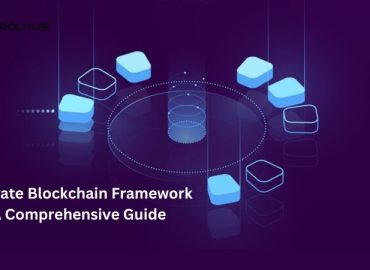What is Polkadot?
Polkadot is a blockchain protocol with two goals: to provide shared security across all connected parachains and to allow all connected chains to interoperate via XCM. The introduction of PDKs such as Parity Substrate and Cumulus has significantly reduced the time required to develop and launch a new chain.
Previously, it could take years to launch a new chain; now, it could take weeks or even days. Let’s start with the essential prerequisites and see how you can create your own vision with Polkadot:
What are Parachains & Parathreads?
Parachains are parallel chains that have their own runtime logic and benefit from the Polkadot Relay Chain’s shared security and cross-chain messaging. Parachains allow for a high level of flexibility and customization, but they require more effort to create and maintain.
Parachains are similar to threads in that they allow the developer to have lower-level control over the logic of their application. The primary distinction between the two is economical, as parathreads are much less expensive to secure than parachains.
Parathreads have lower costs because they will only produce a block when necessary, as opposed to parachains, which have secured a slot to produce a block at every block of the Relay Chain.
When creating a parathread, you will use the same tools, and you will receive all of the benefits of creating a parachain without the cost.
Parachains give the creators more room to build the monetary system and other chain aspects from the ground up. They will enable a more concise and efficient execution of complex logic than a smart contract platform could ever provide. Parachains also provide more governance flexibility and can perform complete upgrades less aggressively than the current hard-fork process.
What are Smart Contracts
A smart contract is simply some code that exists at a specific address on a chain and can be accessed by third parties. The critical point is that the code must be placed on the chain before anyone can begin executing it.
Deploying your smart contract on-chain will differ slightly depending on which parachain you use, but in general, you will send a particular transaction that will create the smart contract on the ledger. You will almost certainly have to pay a fee for the initialization logic and any storage that your contract uses.
Polkadot will have parachains that will serve as smart contract platforms. Smart contracts are limited in complexity and exist on only one chain. They can interoperate with other smart contracts on the same chain. They will, however, be constrained and limited by their host chain.
However, unlike smart contracts, parachains do not have a mandatory gas metering system and may be vulnerable to bugs that cause infinite loops. This vulnerability is mitigated by the weight system implemented in Substrate, though it places a more significant burden on the parachain developer to perform benchmarks properly.
A parachain is a better choice if you need a lot of control over the design and features of your application. Remember that smart contracts can be used to prove ground before being transformed into full-fledged parachains. To facilitate quick iterations, smart contract platforms will typically include convenient tooling such as IDEs.
To keep gas usage within reasonable limits, you will need to consider the storage and complexity of your smart contract. Storage will likely be expensive for whichever smart contract platform you use, so keeping as much data off-chain as possible is necessary.
Polkadot offers the blockchain ecosystem a replacement blockchain framework for building decentralized applications with interoperability, allowing developers to create specialized use cases that scale independently.
The upcoming applications built on the Polkadot Substrate framework will be able to operate within the best blockchain environment for her use case while also benefiting from the larger blockchain ecosystem. Let’s look at how to create a blockchain application:
A blockchain project can have good features and real-world value, but it won’t get off the ground unless it has the right resources to fund its development. Building blockchain applications takes a lot of resources, leading to a longer development process and requiring input from a team of experts in various programming fields, such as cryptography and database administration. Polkadot’s goal is to alleviate these concerns and simplify blockchain development.
Setting up the blockchain application with Substrate
A generic blockchain framework is referred to as a substrate. It offers ready-to-use components for developing blockchain networks & applications. Its modular and pluggable libraries allow you to implement signatures, consensus mechanisms, and other chain components. Substrate’s composable nature allows customization while building an application on the Polkadot network.
Polkadot, as a network, provides the protocols that allow Substrate chains to communicate with one another. You can host your Substrate chains on the Polkadot network through an auction process, but you don’t have to unless you want to take advantage of its features.
Core Layers of a Blockchain Application:
- Database layer
- Transaction queue
- Networking layer
- Block authoring
- State transition function
The substrate provides the fundamental components required to simplify the development process when creating a blockchain. This allows you to focus on developing specific features or customizations for your project.
Deploying the Blockchain Application
Polkadot has relay chains that can be used as a testnet. You can go with any of those chains, but let’s use Rocco as an example. It is a well-known Polkadot parachain testnet. While the Rocco network is based on the proof of authority consensus mechanism, you can also launch your parachain on Polkadot using other testnets such as Westend.
As previously stated above, we consider a Cumulus-based substrate node to set up the parachain because Rocco uses the same for integration. As Rococo integrates Polkadot with Cumulus, we’ll use a Cumulus-based Substrate node to set up a parachain.
To deploy a parachain on the Polkadot network, you must first acquire a parachain slot through an auction process, which is more akin to submitting a proposal to start a new parachain project on Polkadot. The bidding process for a Polkadot slot is detailed in the Polkadot docs.





